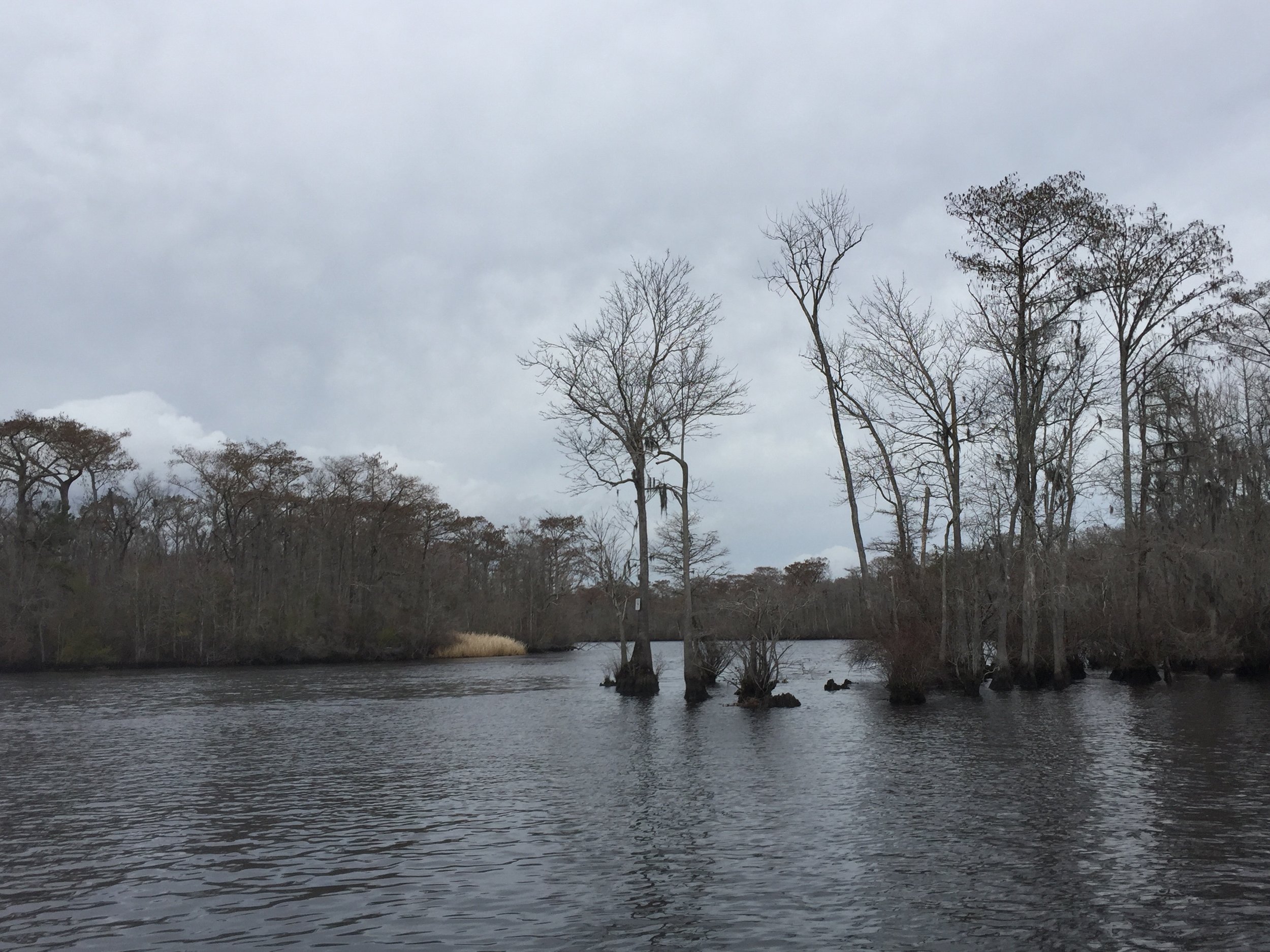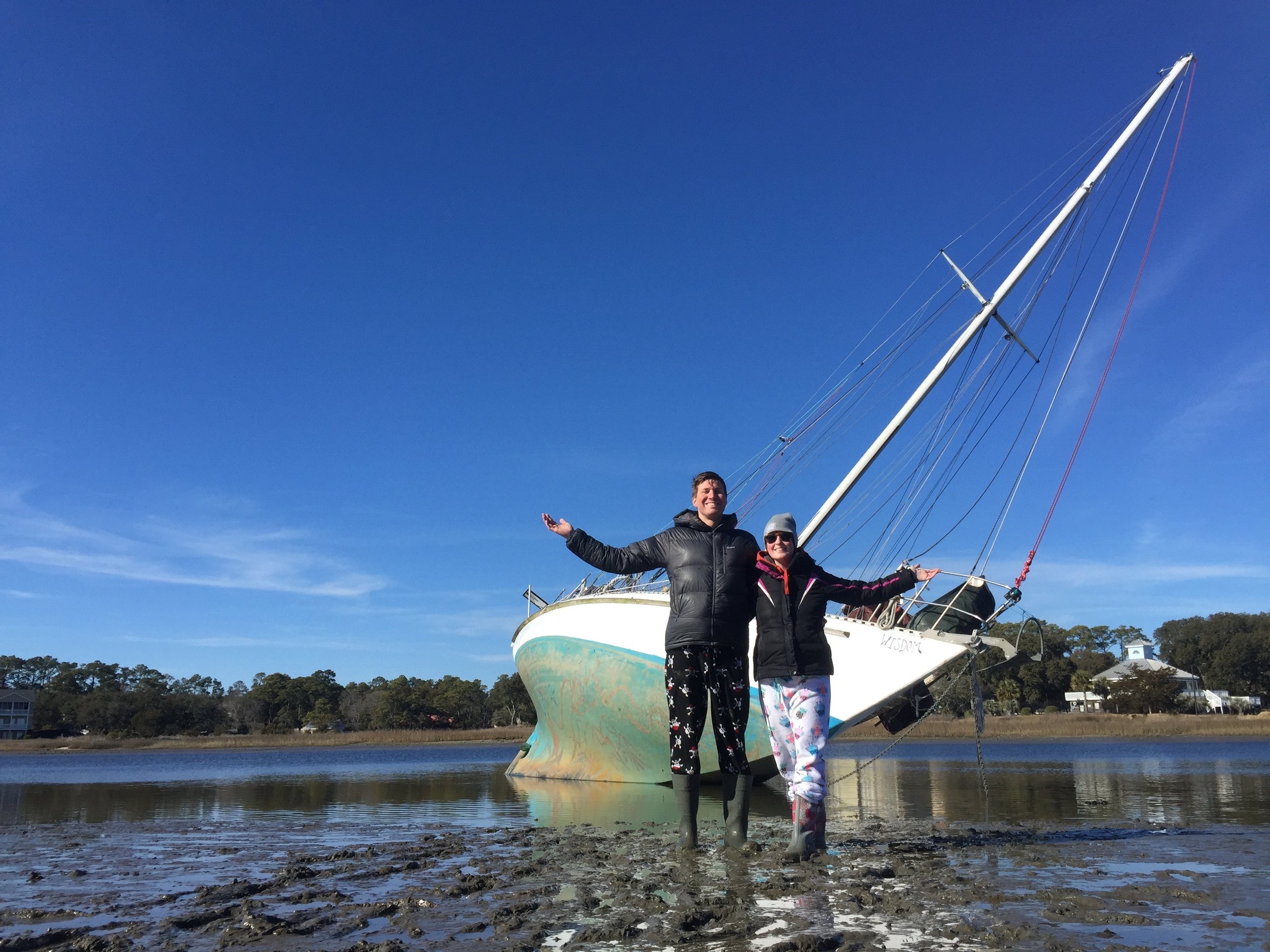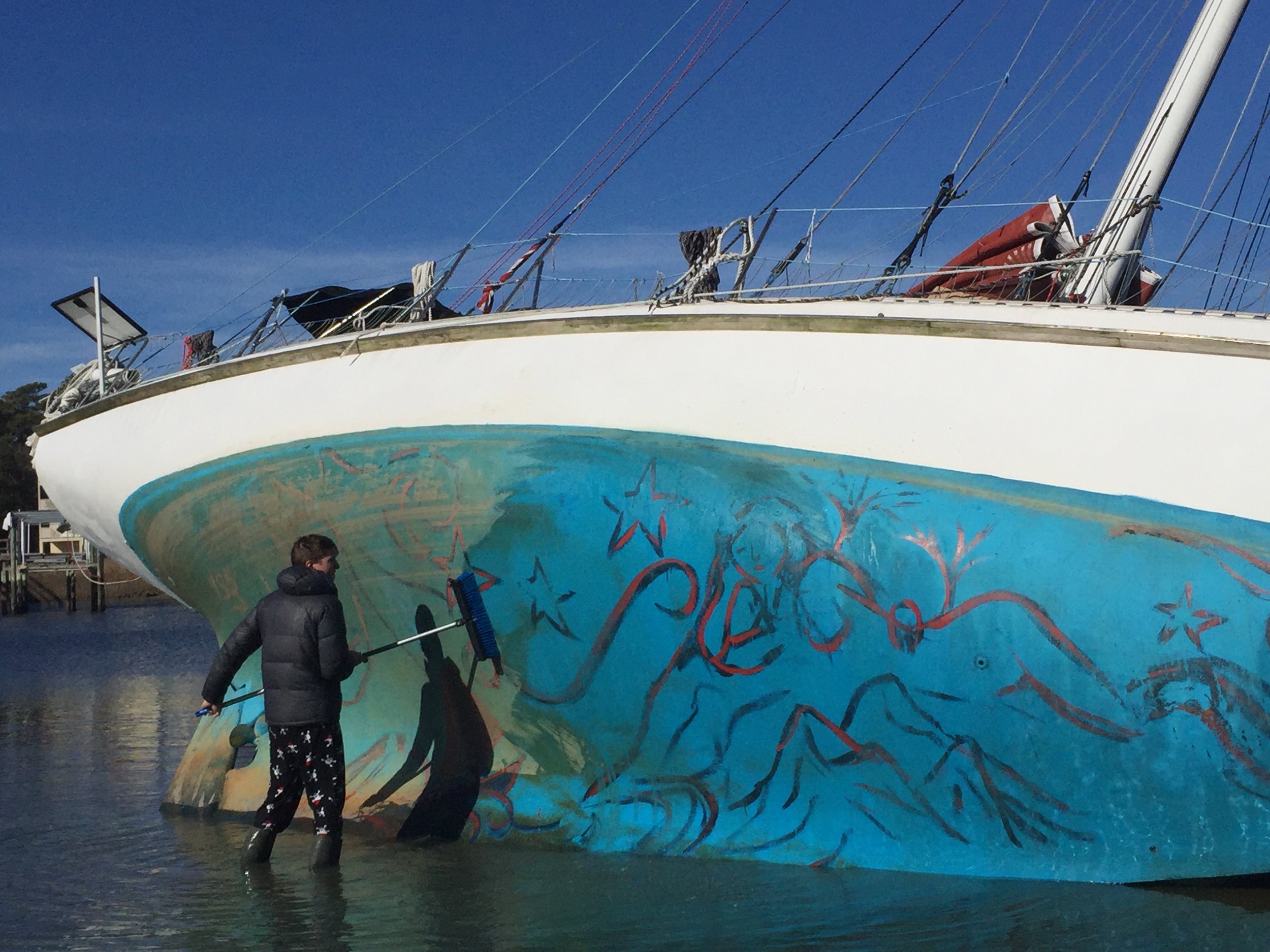We entered the Waccamaw River in the early afternoon and were rushing along with the current but we decided to end the day early by anchoring in a oxbow, in the lee of a grouping of trees. This plan was intended to give us peace and comfort during the next days storm.
While today was a mere 15-20 knots of wind, right on the nose, tomorrow would be the same with the added joy of torrential rains. The following day would be quite different as a cold front is coming in and bringing strong winds from the North.
By anchoring in the lee of the trees, we hear the wind whistling in the distance but do not feel its effects. Then when the winds shift, we will be able to sail (without the use of the motor) all the way to Georgetown!
Sometimes, cruising means taking a day off and relaxing at anchor while you wait for better weather to arrive.












